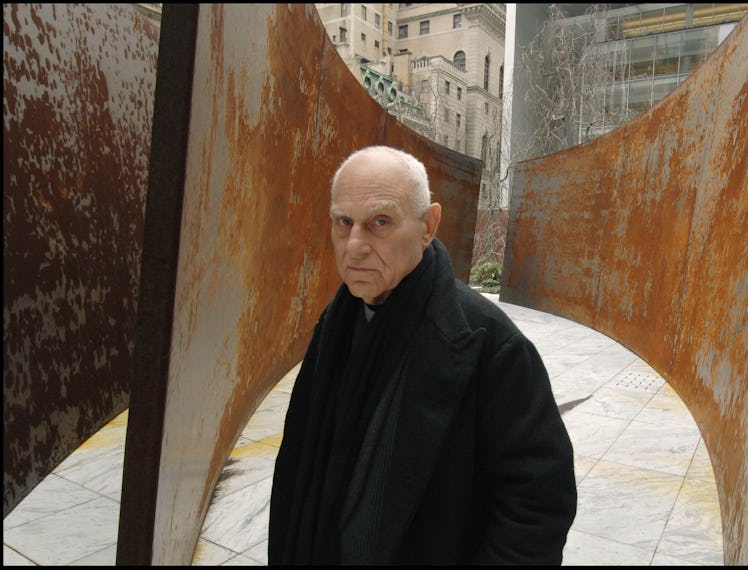Richard Serra, a Giant of American Sculpture, Dies at 85

Richard Serra—who reimagined the medium of sculpture through his large-scale winding steel works that became an unmistakable signature—died on March 26 at 85 years old. One of the most famed American sculptors of the 20th century, Serra passed away at home in Orient, New York, on the North Fork of Long Island. According to the New York Times, Serra’s lawyer John Silberman identified pneumonia as the cause of death.
The artist’s immersive pieces combined the movement of Abstract Expressionism with the rawness of Process Art, and caused a major shift in the way the art community defined Minimalism. His works, which often required the viewer to walk through them to experience them, would go on to influence the careers of artists like Rachel Whiteread, Matthew Barney, and Harold Ancart (the latter of whom assisted Serra from time to time after knocking on the door of his TriBeCa studio and asking to work for him unpaid).
Serra’s most famed artworks—including Tilted Arc, a controversial public installation displayed in Foley Federal Plaza in Manhattan in the 1980s—became the subject of retrospectives and sprawling exhibitions inside the most hallowed halls of the art world: the Guggenheim Museum in Spain, Gagosian, Dia Beacon, and MoMA, where a retrospective titled “Richard Serra Sculpture: 40 Years” wowed critics in 2007. “I think a lot of museums are being built today with Richard in mind,” Barney told W of the sculptor at the time.
A bird’s eye view of Richard Serra’s Sequence, (2006), being installed at his MoMA retrospective in 2007.
Richard Serra, One Ton Prop (House of Cards), 1969.
Serra got his start in the 1960s, when artists from Donald Judd to Andy Warhol were hell-bent on reimagining the entire notion of visual art. But Serra had other ideas. The San Francisco native—who attended UC Berkeley for English literature while working in steel mills to support himself—had impressed his family as a child and a teen with his drawings. After breaking his back playing football at Cal during his freshman year, he transferred to UC Santa Barbara, where he continued to draw—so well, in fact, that he was accepted to Yale to study painting for his BFA and later, his MFA. Following graduation, he traveled to Europe with Nancy Graves, who would become his wife—where he encountered a Velázquez painting that convinced him to ditch the medium and fully focus on sculpture. He decamped to lower Manhattan in 1966 (where he started a moving company with the composer Philip Glass) and started trying out new materials for his sculptures.
Richard Serra, Band, (2006), being installed at MoMA in 2007.
His first major moment in the art world spotlight came in 1981, when he installed the controversial Tilted Arc in Manhattan’s Foley Federal Plaza until 1989. (The issue of its removal even led to some courtroom drama.) By then, at 40, Serra was already a big name in the minimalist art space—and his headline-making moments did not stop there. In 1997, the sculptor captivated the art world with Torqued Ellipses: curved plates of steel that twisted as they grew almost 13 feet from the ground in Downtown New York.
“I think most artists are basically paranoid,” Serra told W in 2007. “It’s sad but it’s true that success breeds confidence. It pulls you out of your vulnerabilities and paranoia, and you feel you’re reaching your full stride. It’s not that you want to be loved, it’s that you want your work to be taken seriously. And there aren’t any guarantees. No one gets a free pass.”